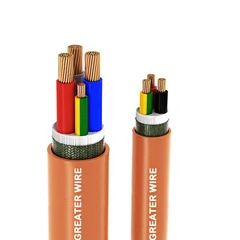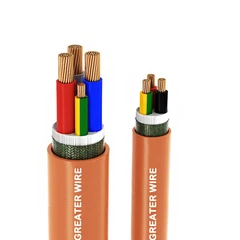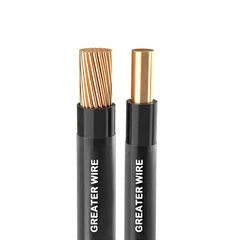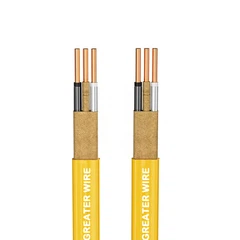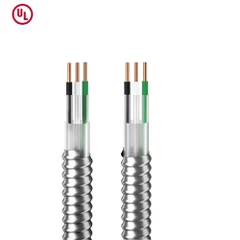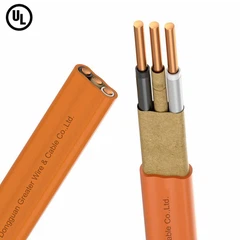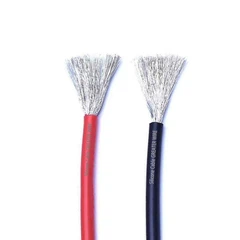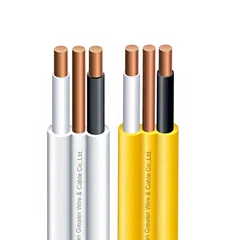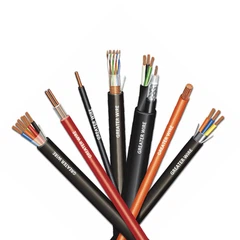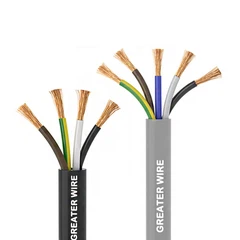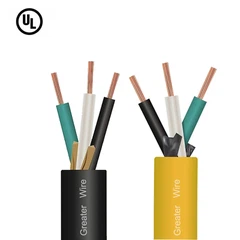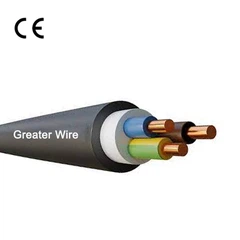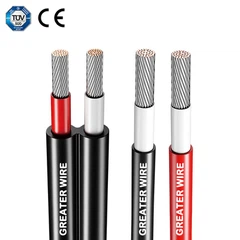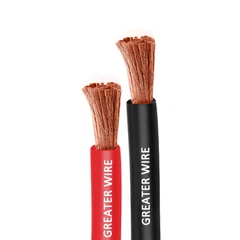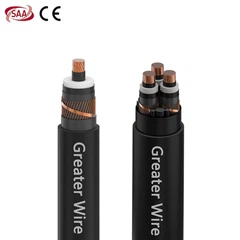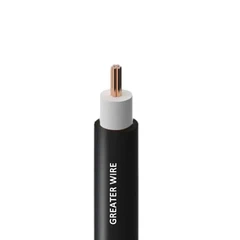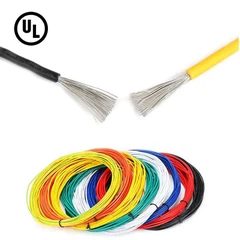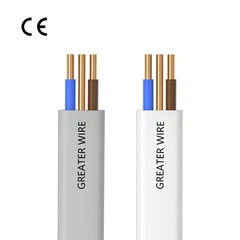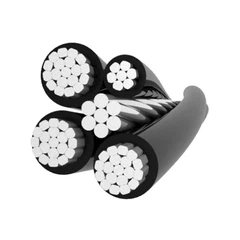1. What Are Type XHHW and XHHW-2 Cables?
Type XHHW (Cross-Linked Polyethylene High Heat-Resistant Water-Resistant) and Type XHHW-2 cables are widely used in electrical systems due to their robust construction and versatility. Both are designed with cross-linked polyethylene (XLPE) insulation, which provides superior thermal stability, chemical resistance, and durability compared to traditional PVC-insulated wires. The key difference lies in their temperature ratings:
Type XHHW: Rated for up to 90°C in dry locations and 75°C in wet locations.
Type XHHW-2: An upgraded version rated for 90°C in both wet and dry environments, making it suitable for more extreme conditions.
These cables are commonly used in power distribution, HVAC systems, industrial machinery, and outdoor installations where exposure to moisture, heat, or chemicals is a concern.
2. Do XHHW and XHHW-2 Cables Require Conduit?
The need for conduit depends on the installation environment and local electrical codes (e.g., the National Electrical Code, or NEC, in the U.S.). Here's a breakdown:
2.1 Type XHHW Cable
Dry Locations: In dry, indoor environments, Type XHHW wire can often be installed without conduit if it is labeled as a "building wire" and meets NEC requirements for exposed runs. However, conduit may still be recommended for added mechanical protection.
Wet Locations: When used outdoors or in damp areas, conduit is typically required to shield the cable from moisture ingress and physical damage.
2.2 Type XHHW-2 Cable
Versatility: Thanks to its enhanced rating for wet conditions, Type XHHW-2 cable can be used in both wet and dry locations without conduit in certain scenarios. For example, direct burial or installation in cable trays may be permissible under NEC guidelines, provided the cable is specifically rated for such use.
Exceptions: Conduit is still mandatory in high-traffic areas, corrosive environments, or where the cable could be exposed to abrasion or impact.
2.3 THHN vs. XHHW
THHN XHHW Comparison: Unlike Type XHHW-2 wire, THHN (Thermoplastic High Heat-Resistant Nylon-Coated) cables have a lower temperature rating (90°C dry, 75°C wet) and thermoplastic insulation, which is less durable than XLPE. THHN almost always requires conduit due to its limited resistance to moisture and mechanical stress. In contrast, XHHW-2's XLPE insulation and thicker jacket often reduce or eliminate conduit dependency.
3. Performance Advantages of XHHW and XHHW-2 Cables
The popularity of Type XHHW and Type XHHW-2 stems from their exceptional performance in challenging environments. Below are their key advantages:
3.1 Superior Thermal Resistance
XLPE insulation allows these cables to operate at higher temperatures (up to 90°C) without degrading. This makes them ideal for overload-prone systems or hot industrial settings.
3.2 Enhanced Moisture and Chemical Resistance
The water-resistant jacket of Type XHHW-2 wire prevents moisture penetration, reducing the risk of short circuits in wet locations. Additionally, XLPE resists oils, acids, and solvents, ensuring longevity in chemical-heavy environments.
3.3 Durability and Flexibility
The cross-linked polyethylene insulation provides excellent mechanical strength, resisting cuts, abrasion, and impact. This durability often minimizes the need for conduit in protected environments.
3.4 Cost Efficiency
By reducing or eliminating conduit requirements, Type XHHW-2 cable installations can lower material and labor costs. Its long service life also decreases replacement frequency.
3.5 Compliance with Safety Standards
Both Type XHHW and XHHW-2 meet UL, CSA, and NEC standards, ensuring safe operation in residential, commercial, and industrial applications.
4. Applications Where Conduit May Be Optional
To illustrate the flexibility of these cables, here are scenarios where conduit might not be mandatory:
4.1 Direct Burial Installations
Type XHHW-2 cable is often approved for direct burial in soil without conduit, provided it has adequate protection against rodents and underground hazards.
4.2 Cable Trays and Raceways
In industrial facilities, these cables can be routed through cable trays or raceways, leveraging their inherent durability instead of conduit.
4.3 Indoor Exposed Runs
When installed in dry, low-risk indoor areas (e.g., ceiling cavities or behind walls), Type XHHW wire may not require conduit if local codes permit.
5. When Is Conduit Still Necessary?
Despite their rugged design, conduit remains critical in certain situations:
High-Impact Zones: Areas with heavy machinery, vehicular traffic, or vibration.
Corrosive Atmospheres: Chemical plants or coastal regions with saltwater exposure.
Aesthetic Requirements: Concealing wires in commercial buildings.
Dongguan Greater Wire & Cable Co., Ltd. has established itself in the American market with its strong production strength. We have 240 advanced production equipments, and we strictly control every process from raw material testing to finished product delivery. In terms of R&D, we invest 20 million yuan every year in the research and development of new technologies and new products, and have successfully launched a number of innovative cable products that meet the needs of the US market. The company has a complete range of UL certified products, including UL83, UL44, UL719, etc., which means that our THHN WIRE, XHHW WIRE and other products are far superior to their peers in terms of safety and durability. However, our prices are more affordable, saving a lot of costs for American builders and contractors, and we are your reliable partner.

